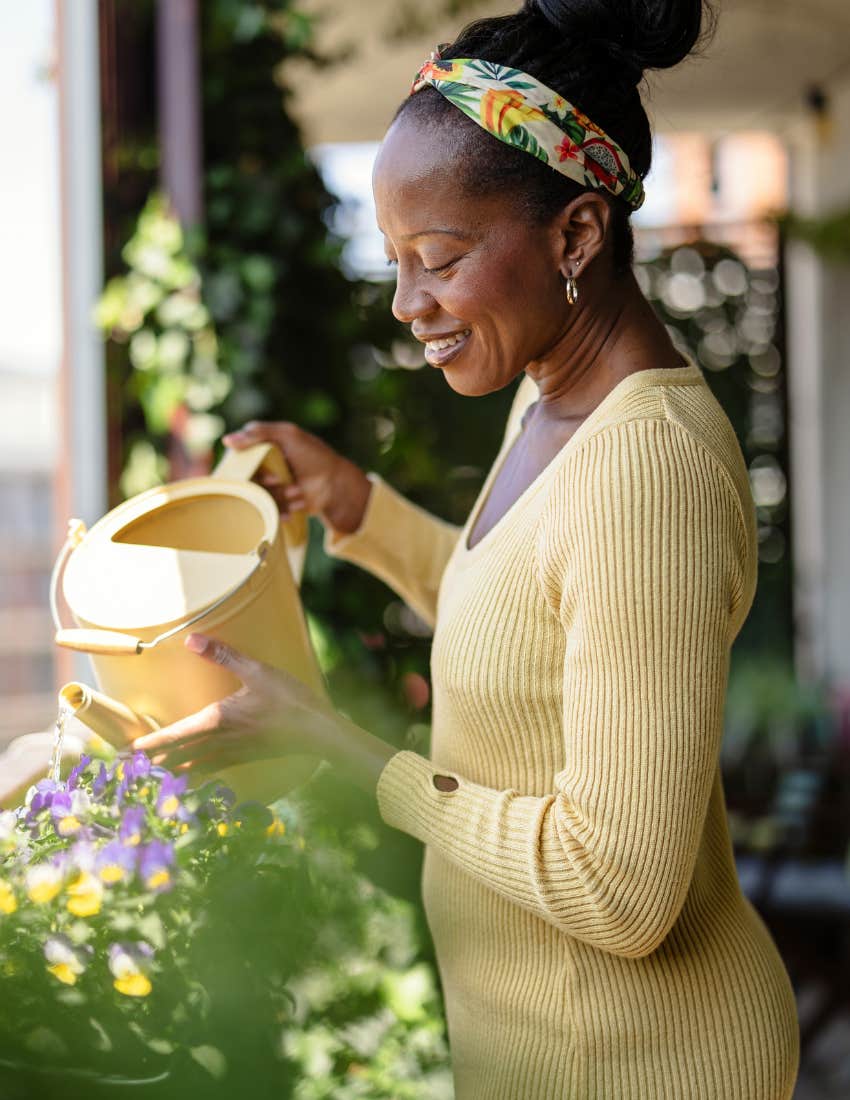The Art Of Inner Peace: 6 Simple Habits Of Authentically Joyful People
Yes, you can become the type of person who brings peace and joy into any room.
 ilya mondryk | Pexels
ilya mondryk | Pexels Toward the end of 2019, I started a nature mindfulness routine to supplement my regular meditation practice. The stress levels at my job and personal life had begun to increase, and my overall emotional and mental stability needed some additional TLC. I wanted to be authentically joyful and to find inner peace.
I knew that mindfulness had wonderful benefits like creating a one-point of focus, instilling more effective coping mechanisms, and helping with overall mindset, so I was looking forward to delving into this sort of practice more deeply. Coupling mindfulness with an immersion in nature, I have to say, proved somewhat magical results.
Some people may find themselves with a regular meditation practice, but still feel a need for more. Perhaps due to a change in their external circumstances, or even internal ones. Regardless, supplementing your meditation practice with mindfulness can help you feel better than you have in years.
Here are six simple habits of authentically joyful people:
1. Let solitude take on greater depth
While I was no stranger to creating "me" time, having time outside, away from home and associated distractions, I quickly realized I’d been limiting my own personal moments either by not being fully present or unknowingly cutting my time short to focus on work, home chores, or caring for others.
Being outside created a wonderful backdrop and provided the space necessary for me to fully engage in the moments of just being in nature with only myself.
Even when I wasn’t mindfully practicing outdoors, I found that any time I spent meditating, journaling, or doing another self-care task, I was resetting the necessary boundaries to experience that time being fully present rather than half-heartedly, like I had been previously doing.
2. Became more aware of the details
 pikselstock via Shutterstock
pikselstock via Shutterstock
Rather than take for granted some details of nature, I delighted in nuances like a bird’s coloring, the way the branches flowed in the breeze, and the scents and sounds of nature all around became more visible, clear, and beautiful.
These experiences carried over to my relationships, too. Rather than glossing over comments or emotions from others, as I’d sometimes done to stay on task, I provided space for people to talk about things or simply acknowledged where they were. Over time, I felt a deepening sense of connection and respect for my work and personal relationships.
3. Became more easygoing
By practicing regular mindfulness one to three times a day, I realized that much of what I was stressing about was patterned behavior and not at all necessary for me to participate in. So, I started to let things go, slowed down a bit, became more light-hearted about inconveniences, and accepted the things I had no control over.
I also started being more aware of the chores I was doing — vacuuming, cleaning dishes, doing laundry, making dinner, and I didn’t mind doing them. And I stopped rushing to get the chore done.
4. Sleep better at night
As my stress was more under control, and I was slowing down my life a bit, even if it was temporarily throughout the day, it was enough for me to see a change in my sleep habits. Rather than waking up in the middle of the night worried about the previous or next day’s events, I found myself sleeping through the night more and waking up with less anxiety for the day. If I did wake up during the night, I was able to fall back asleep more easily.
And of course, because my sleep was better, overall, I had more energy throughout the day to do the things I wanted to do and made smarter food choices.
5. Make intention setting your 'thing'
 Krakenimages.com via Shutterstock
Krakenimages.com via Shutterstock
Upon awakening from a better night’s sleep, I began setting intentions within minutes of opening my eyes, intending that my days be filled with connection, productivity, ease, grace, laughter, and anything else I felt would support me and the day ahead. On great days, I would make an intention before each meeting, or before running an errand, or when making a meal. Some days, I would get away with one broad stroke or specific intention. Regardless, intentions were present in what I was doing.
I also found ways to better communicate my feelings, which I, unfortunately, didn’t always do as well as I could. I started analyzing, to a deeper extent, my own feelings, while finding an understanding of their origin, and then slowly going to work on how best to address them.
6. Capture the experience
Part of my nature mindfulness included taking pictures of the nature I experienced. At home, I spent time reviewing them and remembering details about what I was feeling physically, emotionally, and spiritually when I took the photo, and what I was thinking at the time.
I started writing about my mindful nature experiences and related thoughts and feelings with each picture I took, maintaining the mindfulness even when I wasn’t consciously set out to be mindful. Thus, I created a reflective manuscript that I could go back to time and again to reexperience the serenity and peace of being mindful.
Mindfulness doesn’t have to be a rigid, difficult practice. All it takes is a few moments each day to be fully engaged in the present, fully aware of yourself physically, emotionally, and mentally in pure observation mode without any judgment. Then, over time, you’ll begin to see and feel the magic unfold as mindfulness becomes your natural path.
Pamela Aloia is a certified grief coach, intuitive/medium, and author of inspirational books. Pamela supports people through change and helps them enhance their lives and experiences via energy awareness, meditation, and mindfulness.

